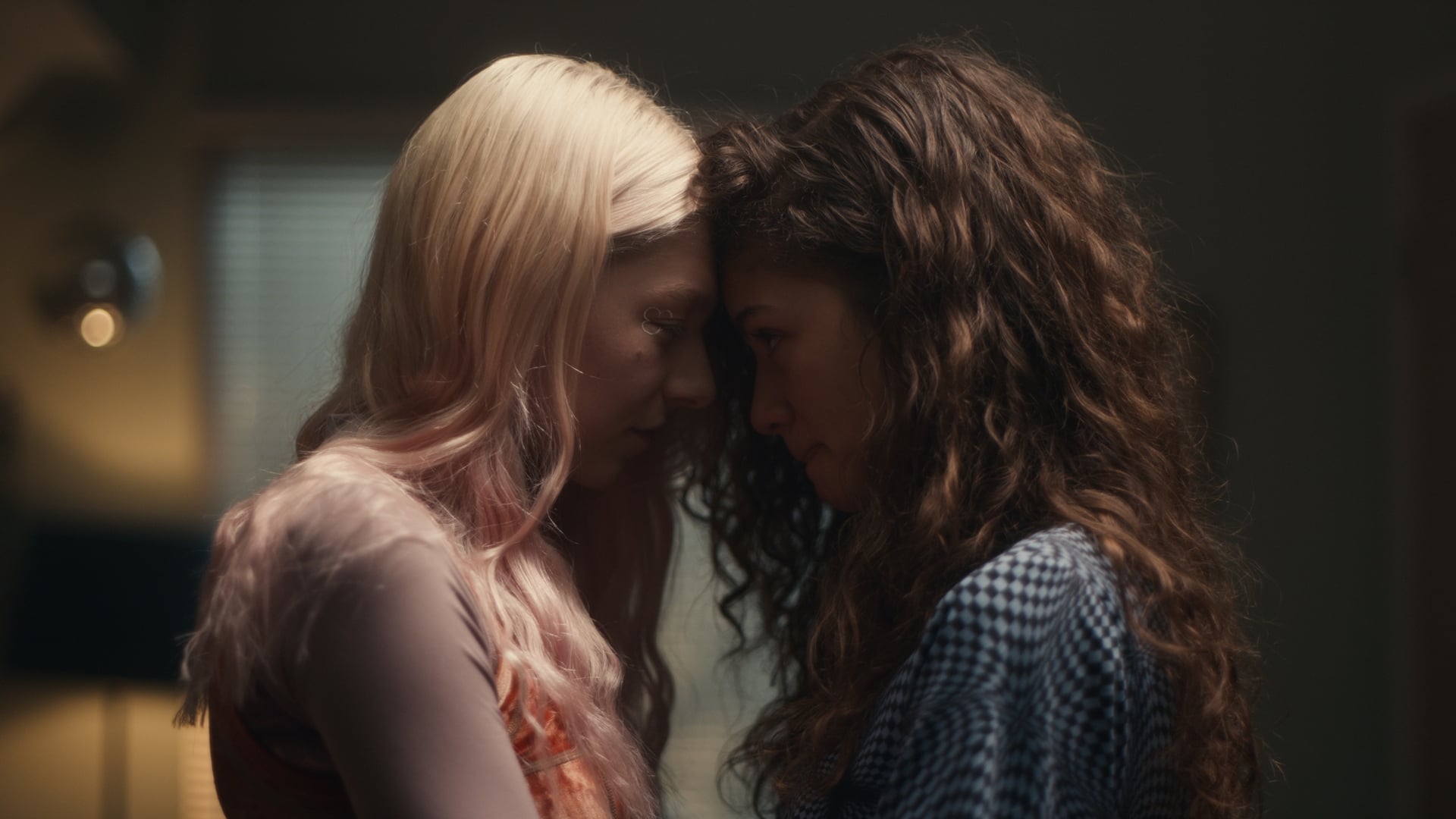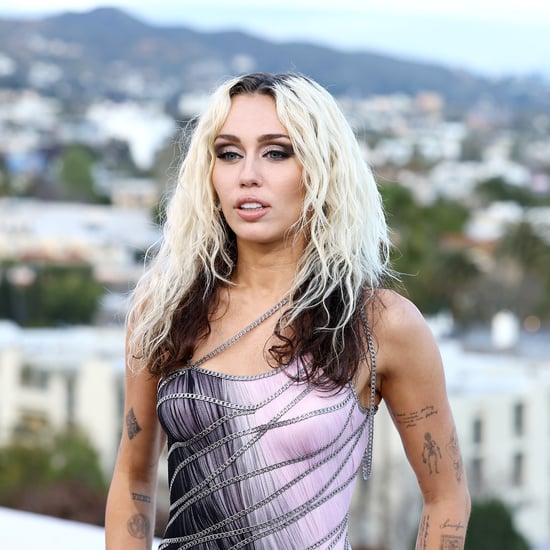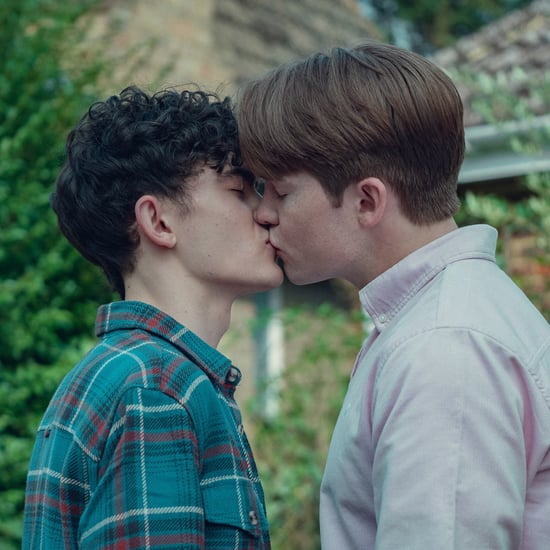What Is Compulsory Heterosexuality?
Are You Bisexual or Just Experiencing Compulsory Heterosexuality? Here's What You Should Know

When viewers tuned in to Euphoria's Special Episode Part Two on Jan. 24, they got a special look inside the mind of main character Jules (Hunter Schafer) — a transgender teen in a complicated relationship with her best friend, Rue (Zendaya). The majority of the episode is set in a therapy session, where she discusses her evolving understanding of womanhood.
While the episode finally introduces viewers to Jules's drug-addicted, absent mother and provides a deeper look into her complex relationship with Rue, her exploration of sexuality is the topic that, for me and many others, hit home. This is not only due to the already sensitive topic that is transitioning and detransitioning but also because the plot line is heavily reminiscent of something called compulsory heterosexuality, and unfortunately, it's a phenomenon all too common among queer people.
The term refers to the idea that heterosexuality exists with little regard for whether or not women actually like men and more as a tradition of heteronormativity and patriarchy.
Because Jules exists at the intersection of many unorthodox identities, her experiences with womanhood and sexuality are inherently more complex than that of a cisgender individual. For her, gender, sexuality, and femininity are so inextricably linked that a true exploration of her perspective requires an understanding of the relationship between them all. So what exactly is compulsory heterosexuality?
Coined by essayist, poet, and feminist Adrienne Rich in her 1980 book Compulsory Heterosexuality and Lesbian Existence, the term refers to the idea that heterosexuality exists with little regard for whether or not women actually like men and more as a tradition of heteronormativity and patriarchy. In layman's terms and as defined by licenced marriage and family therapist (LMFT) Dr. Sheila Addison, "the world is set up to assume that everyone is straight and that different-sex relationships are the norm," she told POPSUGAR.
Compulsory heterosexuality manifests itself in many ways. For some, it's a complete rejection of anything that falls outside of the realm of cisgendered heterosexuality. For Jules, it's the convoluted idea that proximity to men and femininity are inextricably linked. And for me, it was clinging to labels like bisexuality and pansexuality just to keep open the possibility of landing in a hetero-presenting relationship and living happily ever after.
Now a senior in college, I spent my first two years determined to lose what I called my "male virginity." As a result, I landed in a revolving door of sexual encounters with men I didn't like, almost always leaving thinking, "Yeah, I'm a lesbian." But it never stuck. Almost immediately, I would replace what I knew to be true with the idea that it was just that particular man that I did not like. A week later, I would find myself in the same position, because an existence in which I was not attracted to men was an existence I couldn't comprehend.
I want to note that none of this invalidates the existence of bisexual people, pansexual people, or anyone who does not fall into the binary of gay or straight. Those are completely valid identities. But for some, it does act as a transitionary period in which they battle internalized homophobia and other forces.
"Some folks who eventually wind up identifying as gay or lesbian or exclusively attracted to their own gender in whatever way do go through a period of using the label bisexual, and sometimes that's a kind of a deliberate choice because it feels unsafe to step into same-gender attractions," Dr. Addison said.
She continued to explain that, because we are all so indoctrinated by the narrative of who we are supposed to be attracted to, it often becomes hard to identity who we are and what we want. So, how do we find that out? How does one answer the question: am I bisexual or am I experiencing compulsory heterosexuality?
Unfortunately, there's no online quiz that has all the answers. The process of self-discovery looks different for everyone, but both Dr. Addison and Morgan Fitz Gibbon, an Oregon-based LMFT who specialises in LGBTQ+ clinical psychology, shared their advice with POPSUGAR on where to start:
- Find an affirming therapist. Dr. Addison emphasises affirming, because there are many well-meaning therapists who are unaware of (or unable to check) their own biases and therefore fail at providing the open and accepting environment needed to work through these issues. And Fitz Gibbon clarified that a nonjudgmental, accepting therapist is not synonymous with an affirmative one. "There are plenty of good therapists that have never even worked with a queer person," she said. "If they don't know better, they're going to think they're doing a good thing by treating you just like their straight clients, and you're not. An affirmative therapist has been trained in things like how to identify internalized homophobia or biphobia and how to help a client figure out where those things are showing up in their life and relationships."
- Consider a support group. Talking with others who share similar questions and concerns can be helpful in the process of coming out to others and, more importantly, coming out to yourself.
- Start journaling. "Allow yourself to have that freedom and that space and that privacy to write about what's coming up for you," Dr. Addison said. "Then, look back at your own thoughts and see how they change or don't change day to day."
Fitz Gibbon offered questions like "When I have sexual fantasies, who am I thinking about?" or "When I go to the beach or locker room, what's that experience like for me?" as places to begin. "If, when you are at the beach or pool, you can't remember the last time you paid attention to a guy walking by, that might tell you something about where your attractions lie that often goes missed," she said.
Fitz Gibbon also said no process will ever be complete without exploring internalized homophobia and possibly even biphobia. "If we don't unpack those things, then we don't really know what's underlying our hesitance to engage with certain partners," she explained.
- Find biographies and autobiographies of folks who identify with your struggle. It's helpful to find authors with whom you share multiple identities, because our journeys are shaped by everything from social class to race to religion. Dr. Addison recommends starting with Meg-John Barker's Rewriting the Rules, a guide through the complexities of attraction, sex, monogamy, gender, commitment, and love.
Above all, Fitz Gibbon emphasises that the process to self-discovery is just that: a process. "It's OK if we label ourselves one way and then it changes over time. It doesn't mean you were wrong then; it just means that you know more about yourself now," she said. "If you're still not sure, it's OK. There are stages of identity development, and one of them is the part where we know that a thing exists, but we aren't quite sure what it is. That's an OK place to be in. You won't be stuck there forever, and in the meantime, you get to enjoy the process of figuring it out."






